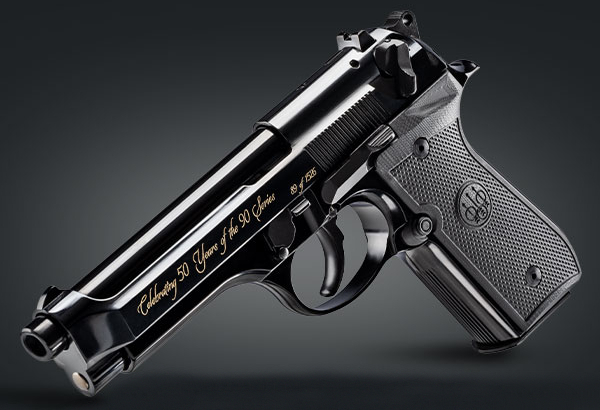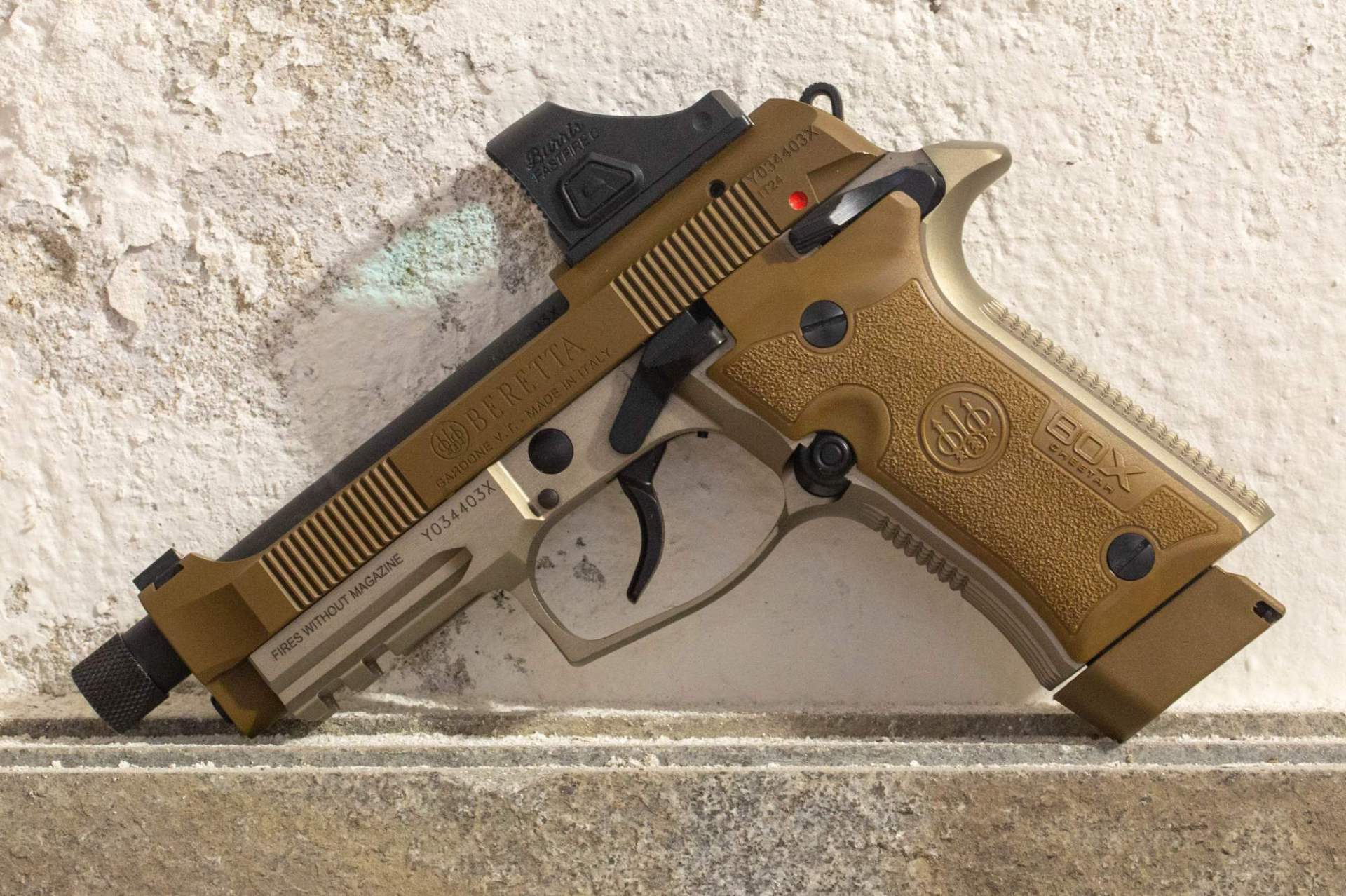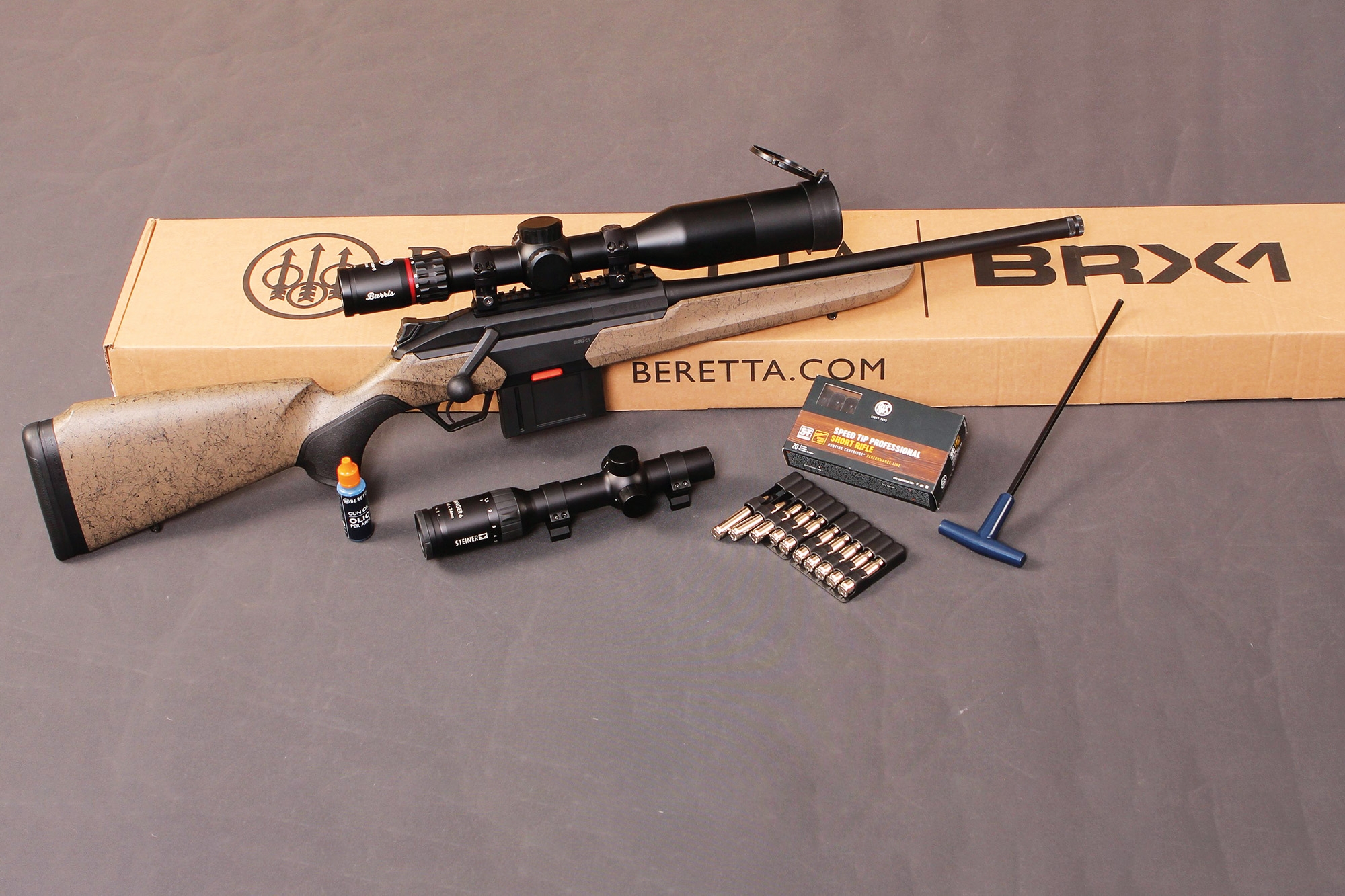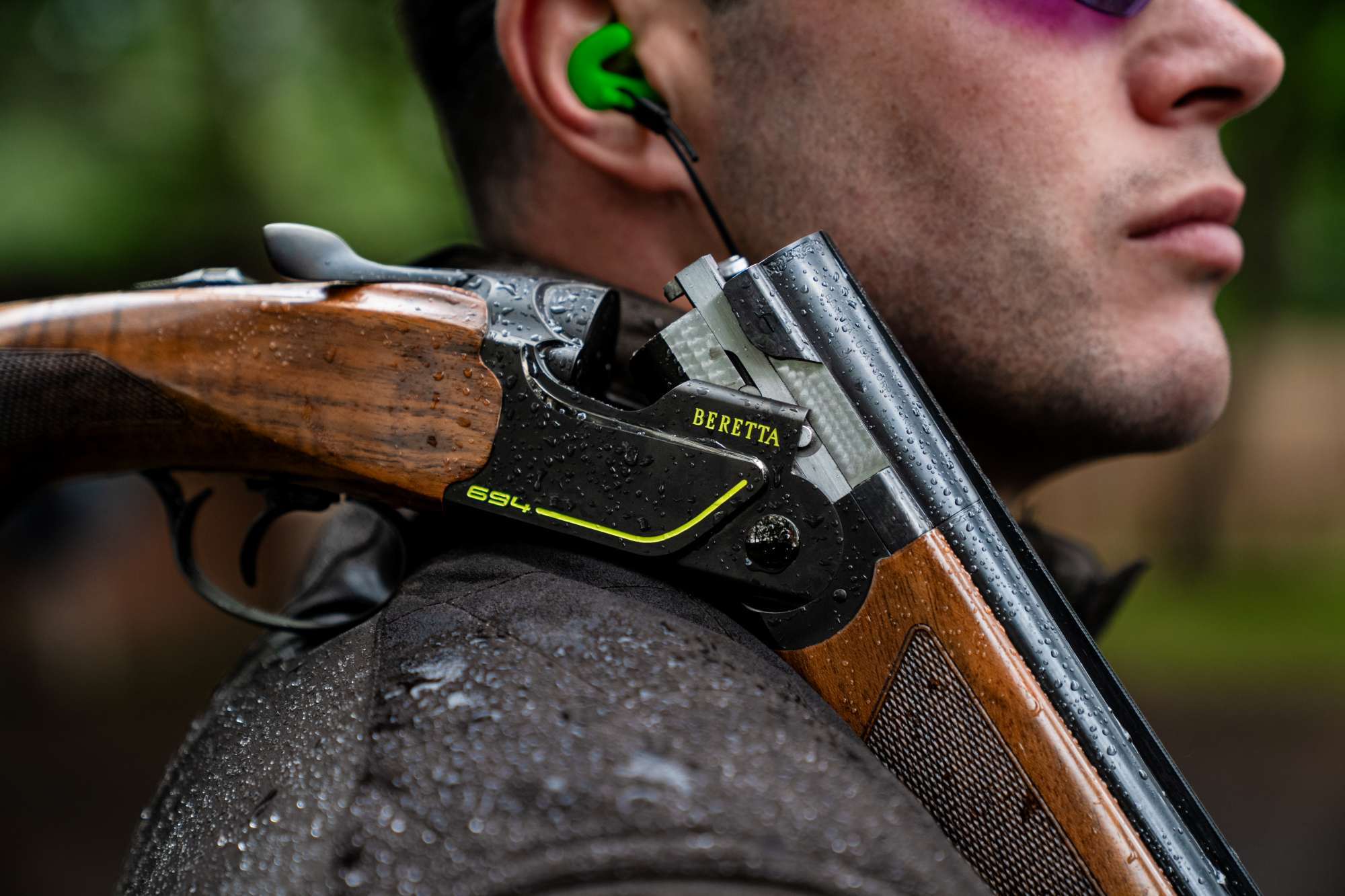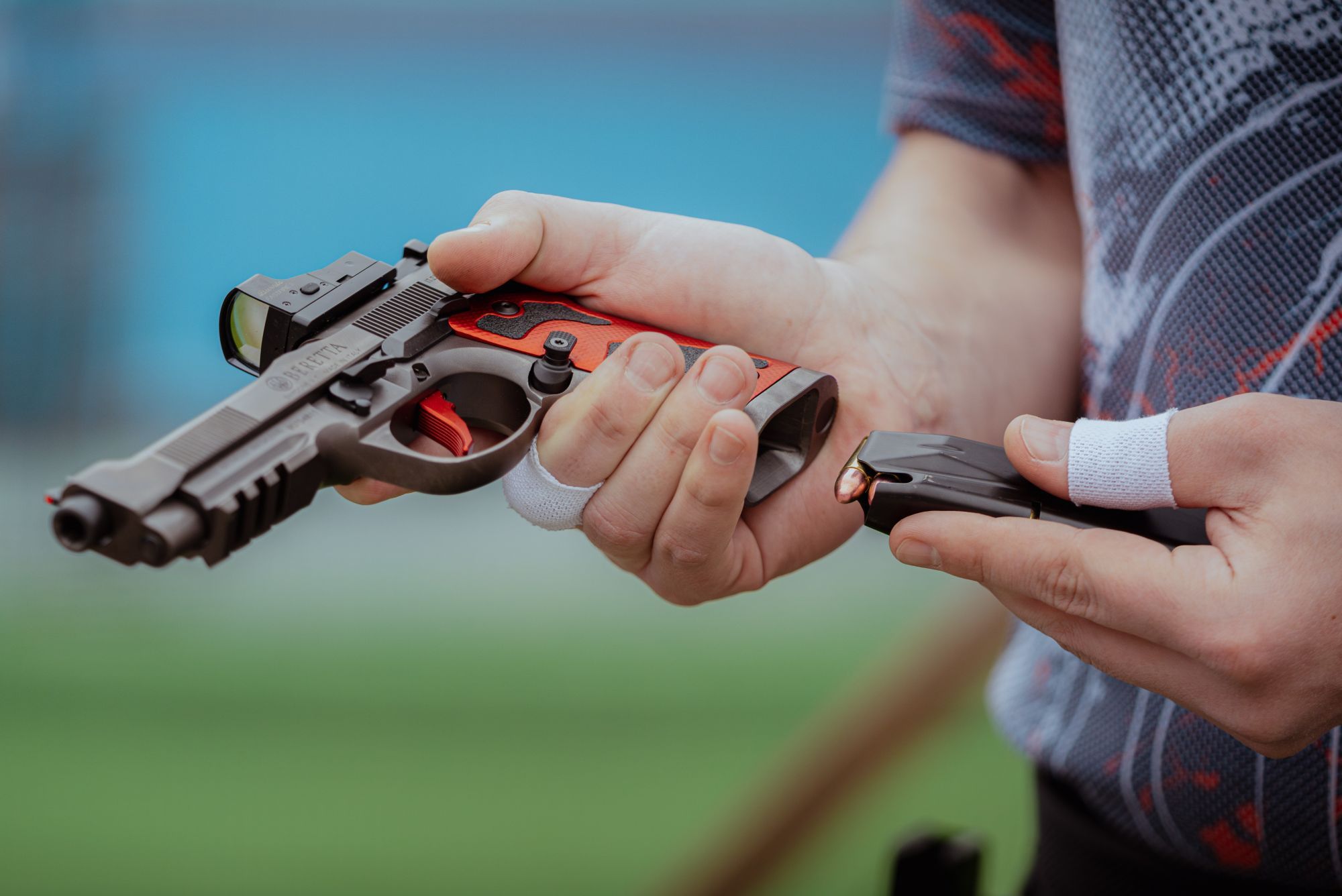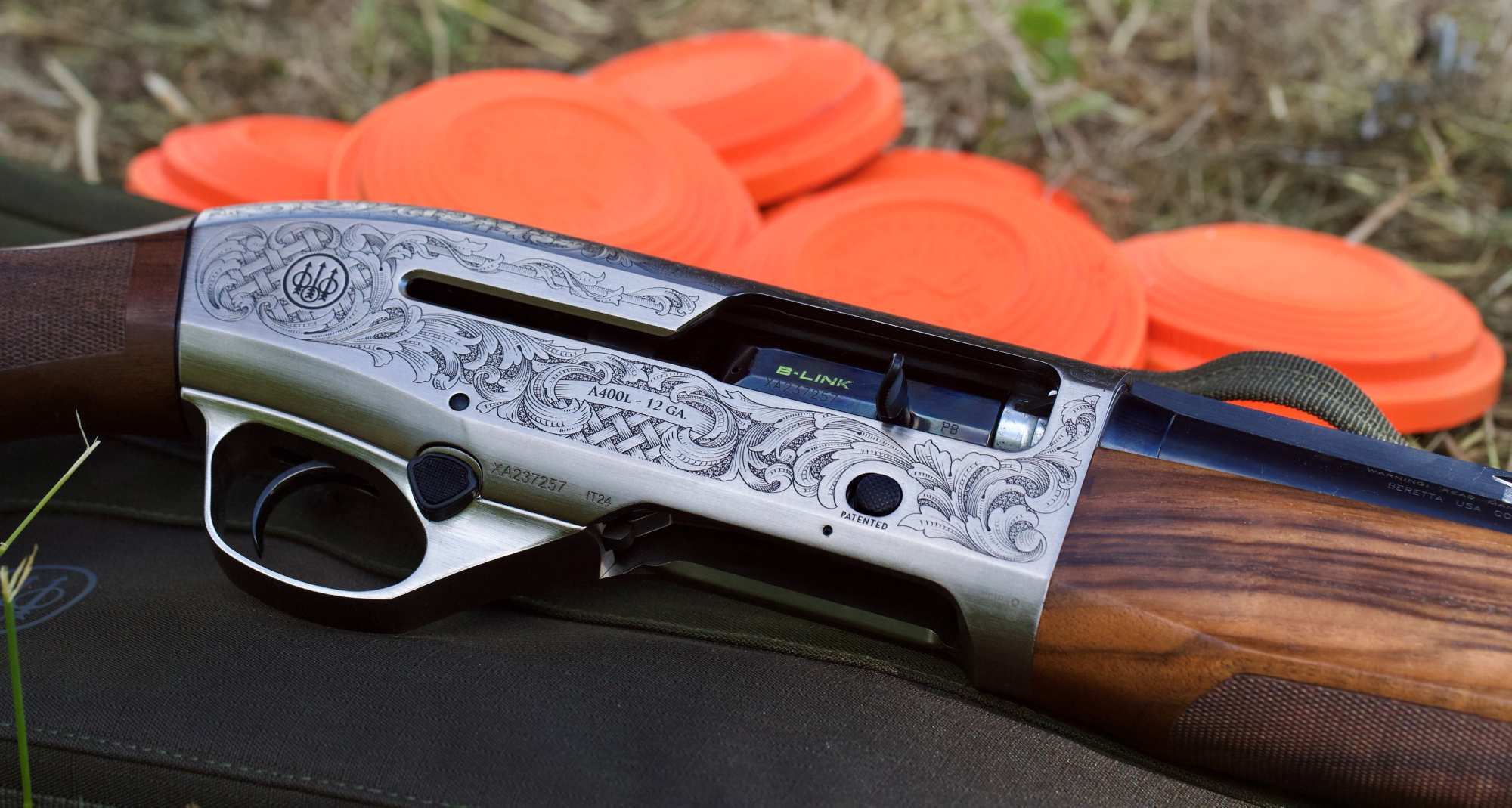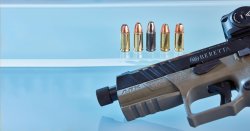
The most striking thing about this "new" Beretta APX first – apart from the fact that the grip frame has now been coloured green: the barrel protrudes a significant length, about 20 millimeters, from the slide. The muzzle thread for silencer mounting is fitted with a round protective cap. The second glance falls on the shark-fin-like front sight. Together with the rear sight, this is now high enough – albeit just barely – to allow for accurate shooting if the red dot fails ("co-witness" is the word here). Then there is the protruding magazine base. This means that the magazine now holds 19 rounds instead of the previous 17.
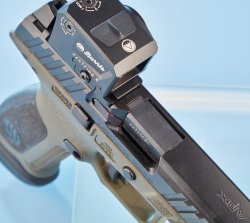
Beretta APX A1 Tactical – What has remained
The flat grip front strap has a very rough texture, which firmly secures your fingers without forcing them into uncomfortable contours. Earlier APXs still had some finger grooves. The slide coating has not been changed either, it is matte black and is still called Aquatech-Shield. In contrast to conventional coatings or bluing, it is claimed to offer better resistance to corrosion and chemicals. The 10-mm wide trigger has also been retained, giving a "full" feel on the index finger. Of course, the signature trigger safety has also been retained. Both visually and haptically, the extractor claw signals whether a cartridge is in the chamber. However, it is more haptic, as the edge of the claw protrudes slightly. In good lighting conditions, it is also visible because the red-colored upper side protrudes slightly and thus signals a "potential danger".
The Beretta APX A1 Tactical in detail
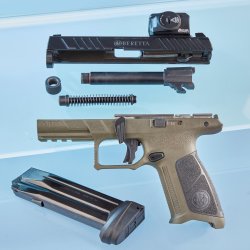
The rear sight, which is almost 11-mm high and whose muzzle end is at right angles to the slide surface, also allows one-handed slide racking on a sufficiently stable edge in an emergency – if no red dot sight has been fitted, otherwise you have to hope for a sufficiently stable red dot device. Both the rear sight and the front sight can be drifted sideways in the dovetail. Left-handed shooters can now enjoy a pistol that is completely suitable for left-handed use after changing the magazine release. This is because there is no manual safety. The slide stop release uses a lever that can be operated from both sides. Just the takedown lever is only on one side – on the left in the firing direction. Like its predecessor, this APX A1 is quick and easy to disassemble, but only after unscrewing the muzzle thread protector. The magazine must be simply removed from the uncocked gun, then the axle of the disassembly lever, which protrudes slightly to the right, is pressed in firmly, the lever is rotated and the slide can then be removed from the frame. The barrel and recoil spring can then be removed too. In addition to the usual brush and a cable lock, accessories include two interchangeable backstraps, a spare magazine and a loading aid. However, despite the 19-round magazine capacity, this is more interesting for users with weak thumbs; the testers did not find the effort required to load the 19th cartridge particularly high. The effort required to attach a suitable backstrap also remains manageable. Using a narrow screwdriver, the small metal tab of the retaining clip at the rear end of the magazine well is pried out and the clip can then be pulled out.
The Burris Fast Fire E, which fits on the optic interface, uses the same screws and, above all, a reassuringly large center of gravity. Plates for other red dot sights such as those from C-More, Leupold, Trijicon or Steiner MPS are available.
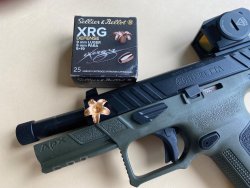
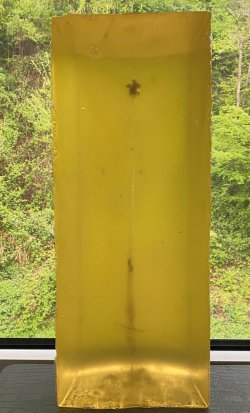
Beretta APX A1 Tactical on the shooting range
The widely projecting grip spur is characteristic of the APX family. In conjunction with the matching backstrap, this counteracts muzzle rise noticeably. None of the different bullet shapes caused feeding problems, and the disposal of the fired cases also worked (almost) without a hitch. Only the cases of the relatively weak Norma Safe Guard rolled out of the ejection port rather than flying out. With a weak shooting hand, malfunctions could be provoked here. But at just under 70 grams, which is the Burris Fastfire E weight, a very heavy red dot sight sat on the slide. This is a good 40 grams more than the weight of open red dot sights such as the Burris Fastfire III. Nevertheless, enclosed red dot sights are the better choice for professional application profiles than the dirt- or rain-sensitive open devices, despite the sometimes higher weight. It is not without reason that LEOs and the military favour enclosed-design versions. Side-mounted battery compartments, as here on the Fastfire E, also have their advantages. This eliminates the need to sight-in again after changing the battery, as is the case with models whose battery is located in the base and can only be changed after the red dot sight has been removed. Enclosed red dot sights are expensive, look bulky, are often considerably heavier, but are much safer beyond sporting use in case of doubt.
Accuracy was tested in a sitting position. At a distance of 15 meters, the combination of Beretta APX A1 Tactical and Burris Fastfire E shot very tight groups. The new ammunition from Sellier & Bellot (100 gr XRG Defence) was convincing in Clear Ballistics, as the strongly backward-curved petals of the test bullet indicate significant performance reserves at lower impact velocities, as is common with the shorter barrels of compact or subcompact pistols..
Beretta APX A1 Tactical technical specifications
Model: | Beretta APX A1 Tactical (OR) |
Caliber: | 9mm |
Capacity: | 19+1 rounds |
Dimensions (LxWxH): | 210x33x156 mm |
Barrel Length: | 123 mm |
Trigger Pull Weight: | 2,900 g approx. |
Weight: | 845 g approx. (with Burris Fastfire E red dot sight: 915 g) |
| Price (MSRP in the US): | $579 |
Features: | Polymer framed pistol, suppressor-height sights, ½"-28 TPI muzzle thread for silencer mounting, serrations on rear and front slide sides, duster cover Picatinny rail, one spare magazine with loading aid, three interchangeable backstraps, plastic case. |
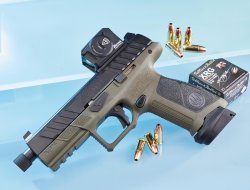
Conclusion: Beretta APX A1 Tactical – A recommendation?
About three years of market experience with the APX A1 has prompted Beretta to implement some improvements. Apparently, as with many upgrades to the same model, which don't look like "much". But the higher sights on the Beretta APX A1 Tactical alone calm the statistically rather unfounded concern of a red dot failure. And the two extra rounds, well, having is always better than needing. For $579, which is the MSRP in the US, the APX A1 is a recommended purchase for those who want to use handguns with red dot sights.
Further information on the Beretta APX A1 can be found on the manufacturer's website.




